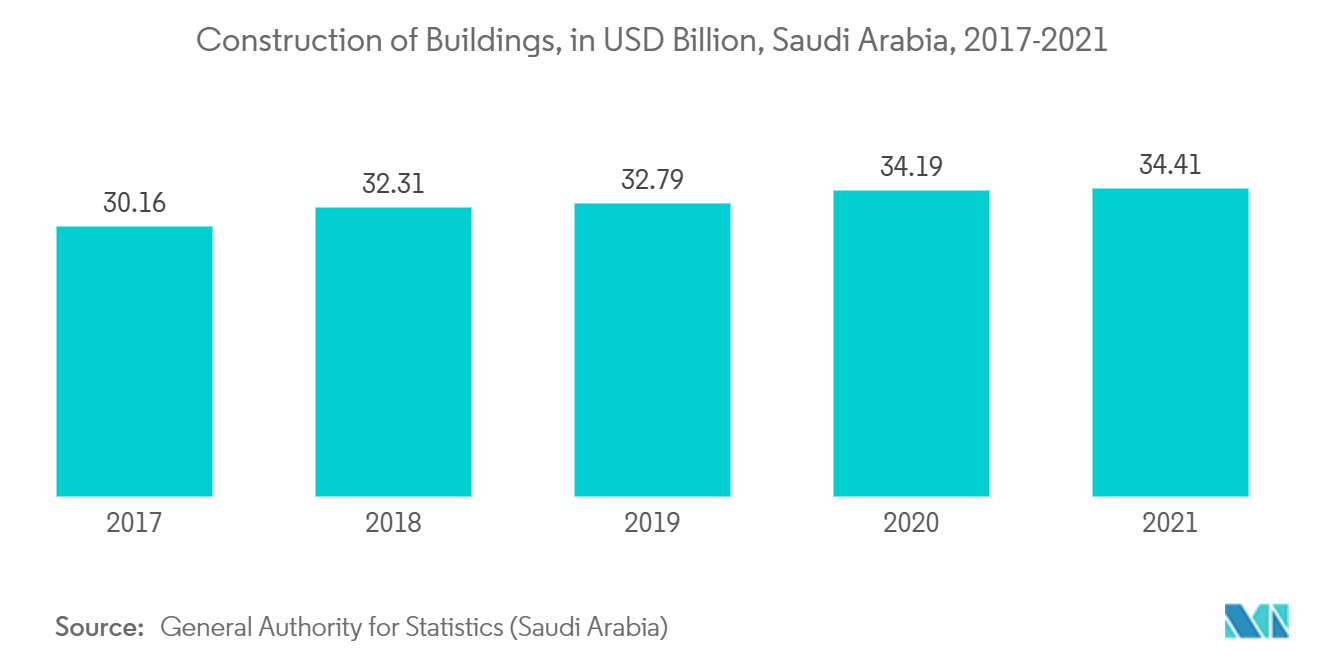Market Trends of Middle-East and Africa Gypsum Board Industry
This section covers the major market trends shaping the MEA Gypsum Board Market according to our research experts:
Ceiling Boards to Dominate the Market
- Gypsum ceiling boards are designed for application on interior ceilings, suitable for both residential and commercial buildings, primarily those intended to receive a water-based texture finish.
- Ceiling boards are interior surfacing materials with the same physical appearance as gypsum wallboard.
- Fire-resistant ceiling boards are used in kitchen areas, and water-resistant ceiling boards are used in top-floor ceiling applications.
- These boards reduce VOC levels and reverberation time and improve speech intelligibility in a given room. Other advantages include reduced weight, shear resistance, fire resistance, dimensional stability, specified lengths, etc.
- Some of the major manufacturers of gypsum ceiling boards are Mada Gypsum, Saint-Gobain Gyproc, USG Boral, and others.
- The growing demand for ceiling boards in residential and commercial buildings coupled with the growing construction activities mainly in UAE, Saudi Arabia, and other countries of the Middle-East is the key factor driving the product demand.
- In June 2022, around USD 77 billion in construction and transportation projects were reported at a tender stage, and another USD 352 billion in contracts were reported in the design and study stage. The majority of these contracts were for government-backed infrastructure projects related to the development of highways, railways, seaports, airports, bridges, and water and sewage systems.
- Furthermore, in August 2022, Saudi Arabia began work on the Jeddah Central development project. Construction of four iconic structures, including a museum, a sports stadium, a coral farm, and an opera house, is part of the USD 20 billion infrastructure project.
- UAE construction industry is projected to grow steadily owing to the rising tourism industry within the country. There are a number of initiatives and plans at play to stimulate industry growth, including the Sheikh Zayed Housing Programme, the Energy Strategy 2050, and the Dubai Tourism Strategy.
- Hence, ceiling boards are expected to dominate the market.

Saudi Arabia to Dominate the Market
- Saudi Arabia announced Vision 2030 program in April 2016. The program is likely to empower the nation to be less dependent on oil exports and production through increased tourism and foreign investments.
- However, due to the COVID-19 pandemic that has infected approximately 60,000 people in the country, the government announced a cut of USD 8 billion for 2020. This is a direct result of the severe lockdown that the country has witnessed, which reduced production across various sectors countrywide.
- The market openness and investment opportunities in Saudi Arabia are moderate as compared to other emerging economies. However, the government, in its 10th development plan, is reforming the economic policies with investments in diversified sectors.
- The country is embarking on a large number of residential and commercial projects, which are expected to increase the construction activities in the country. Moreover, government and private investments in different sectors of the country led to a rise in industrial and commercial building and construction activities in the country.
- Saudi Arabia registered a 13% year-over-year (Y-o-Y) growth, which was influenced majorly by urban and industrial constructions. The urban construction sector is the largest contributor to the construction sector's expansion, with 3,727 active projects valued at USD 386.4 billion. GDP from construction in Saudi Arabia increased to USD 8,058 million in the third quarter of 2022 from USD 7,593 million in the second quarter of 2022. The increase in the construction industry will boost the demand for building materials, thereby propelling the consumption of gypsum boards.
- As of October 2022, Saudi Arabia holds a 35% market share with a recorded USD 31 billion worth of contract awards against an overall MENA total of USD 87 billion. Approximately 70% comprise of construction sector projects with residential, cultural, leisure, and hospitality as sub-sector leaders, which is the driving force behind the Vision 2030 strategy.
- In Saudi Arabia, according to Major Building Expo in Riyadh, the construction industry is poised for tremendous growth over the next five years, with 700 new projects set to be launched in the coming months and targeted for completion by 2025.
- Thus, based on the aforementioned factors, Saudi Arabia is expected to dominate the market.


